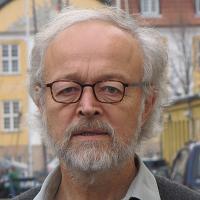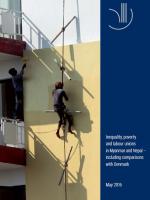Rising inequality is not inevitable
Inequality is not good for the poor, but it is not good for the rich either. Inequality between countries is growing in many instances, but inequality within countries is a more mixed picture. In many developing countries inequality appears low, but will it remain so? And will a growth in inequality lead to more conflict and instability as expectations fail to be realized? The picture is far from clear and while serious grounds for concern are present, there are also grounds for optimism.
A new DIIS Report:Inequality, poverty and labour unions in Myanmar and Nepal – including comparisons with Denmark,commissioned by the Danish Trade Union Council for International Development (LO/FTF Council),investigates inequality and workers’ experiences with inequality in Nepal and Myanmar. Comparisons are made with Denmark in order to draw out certain key aspects of inequality, particularly the importance of linking it to the issue of poverty. In Nepal and Myanmar, inequality is relatively low; in the former the number of extremely poor people has dropped significantly since the 1980s, and while data are poor for Myanmar the trend for extreme poverty also appears to be downward. In both countries a large proportion of the population are ‘working poor’ (earning less than PPP $2 per day). Meanwhile in Denmark although inequality is quite low, the number below the national poverty line has quadrupled since 1999. The Danish government has recently decided to stop using this poverty line.
In Nepal and Myanmar, gender, ethnic and other barriers to decent work exacerbate the problem of workers’ access to work, which is already difficult due to an oversupply of labour. Access to regular employment is seen as critical to a family’s economic condition, not least to invest in their children’s education with the hope that they can have a better life than their parents. Health investment (e.g. insurance) is not a priority despite sickness often being indicated as a cause for poverty. While many workers are optimistic about the possibility of improvement for themselves and their children, few have written employment contracts. Membership of labour unions is rare outside the public sector and labour unions face major challenges if they are to become representatives for the majority of workers and an accepted party to policy negotiations with employers and governments. In Denmark, the role of labour unions in securing workers’ interests in areas such as employment and welfare policies is recognised by many and not least for reducing inequality.
The Report’s conclusions are many, but three of particular note are:
- The data on inequality are neither strong nor standardized and are open to more than one interpretation.
- It is important to look at inequalityandpoverty together in order to learn from comparison and to identify the greatest challenges.
- Rising inequality is not inevitable, but has a lot to do with politics and not least with the role of labour unions within the political arena.
DIIS Experts


